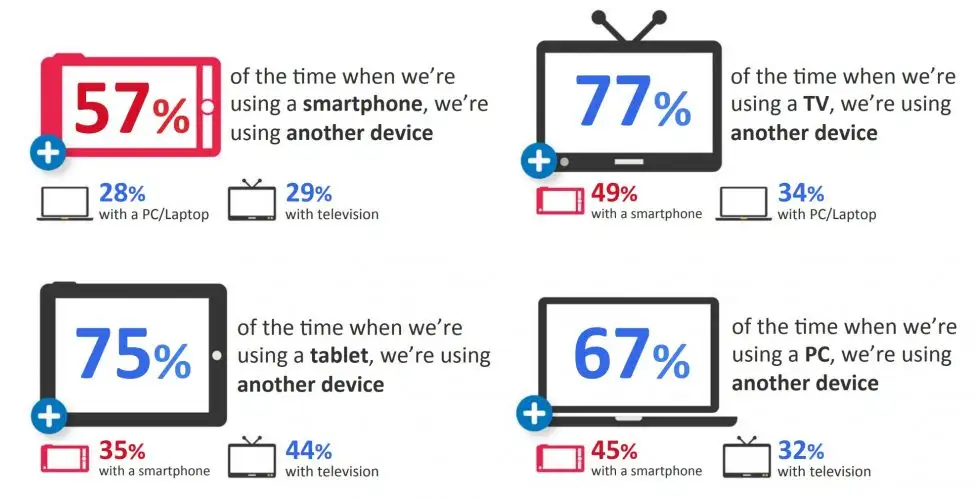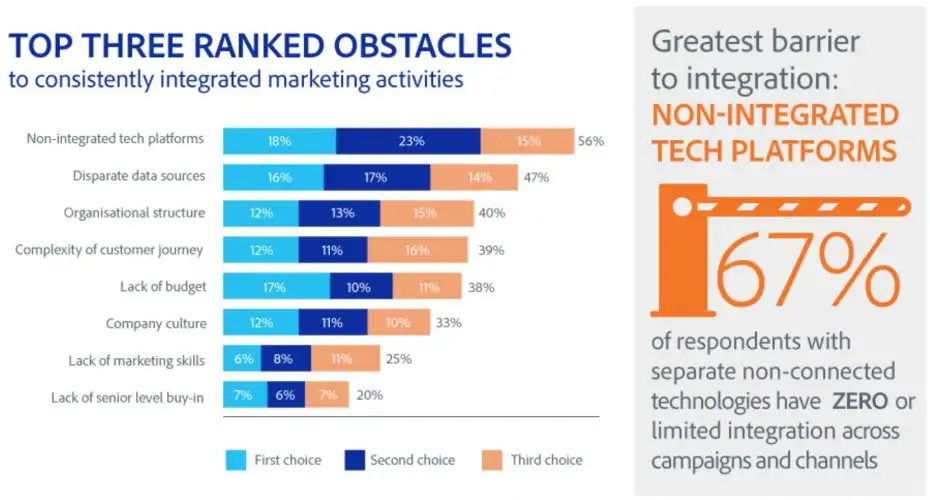More than 90% of consumers move between digital platforms throughout the day. Whether it’s picking a nearby restaurant on a mobile, researching suppliers on a desktop, or reading a case study on a tablet, the use case for B2B and B2C content consumption varies, but one fact remains constant: the number and type of devices and platforms we consume information on is changing.
Marketers need to accept that their audience will not stick to one device. This represents a number of challenges:
- Campaigns need to cater to more than one medium
- Multiple platforms need to be targeted to achieve maximum market penetration
- Creative needs to be responsive or specifically targeted at device types
- Traditional results tracking no longer shows a true representation of campaign metrics
- Already fragmented user journey are now even more complicated
The multi-screen world
Google estimates that 90% of people online use multiple screens sequentially to complete a task, and 98% move between devices that same day. The choice of device used is often driven by context. Computers are used for productivity and information, smartphones are used to stay connected, and tablets are used primarily for entertainment.
Additionally, users often multi-task across multiple devices, most frequently combining PC and TV use with a smartphone.
Tracking campaign effectiveness in this multi-screen world is one of the biggest challenges currently facing marketers and ad networks such as Google and Facebook. Cross-device conversion tracking has improved greatly in recent years, but it isn’t quite perfect yet. Improving the accuracy of the probabilistic calculations used to determine cross-device usage is a major focal point for the ad networks this year.
The omnichannel world
Facebook may be the most popular social network in the world, but it is not the only one. LinkedIn, Twitter, Instagram, Pinterest, Snapchat, YouTube and a number of other networks command user attention and influence their purchasing decisions.
A study published on Harvard Business Review found that the more channels a customer users, the more valuable they are. Not only do omnichannel shoppers spend more (4% – 13% higher basket value), but they also are more loyal (logging 23% more repeat shopping trips).
Less than three years ago, only 14% of companies were found to join up their marketing activities across channels. Today that percentage has increased, but not quite in pace with consumers. The biggest challenges marketers face are platform limitations and data sources.
Research published on Mashable a couple of years earlier had found that 72% of consumers said they would rather connect with brands and businesses with an integrated multi-channel marketing approach.
Attribution modelling is perhaps the most important take-away here. Marketers from all types of businesses need to review their conversion funnels and identify common user journeys. Chances are, these journeys will be vastly varied, with multiple touch-points occurring on a number of devices via different channels.
Understanding the channels that lead prospects down the path of conversion to customers is the starting point to developing an effective multi-channel marketing strategy.
About the Author
Jérôme is the International Director at AccuraCast. A multilingual digital marketing specialist, with a very strong background in data and finance, Jérôme has previously worked at Euromoney and Geosys, where he did number-crunching for NASA.













